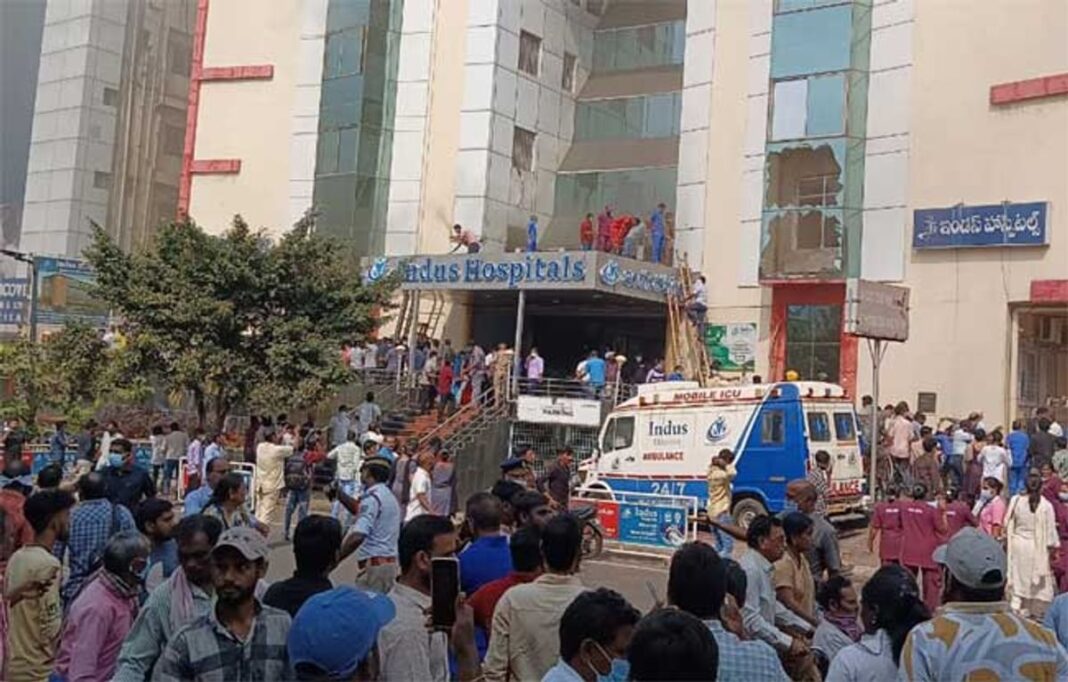A recent surge in fire tragedies across India has exposed critical deficiencies in fire safety protocols, particularly in hospitals, schools, and public buildings. This alarming trend underscores the urgent need for stricter regulations and improved enforcement mechanisms.
The fire at Indus Hospital in Jagadamba junction in Vizag, though contained without casualties due to its accessible location, serves as a warning. In contrast, a fire at a Rajkot game zone with only one exit resulted in 35 deaths, including children, showing the deadly consequences of inadequate emergency exits. Another incident at Babycare Hospital in Delhi, where an electrical malfunction and exploding oxygen cylinders killed seven infants, revealed a critical oversight in fire safety permits.
These incidents reflect a broader pattern of frequent and severe fire accidents in various facilities, including hospitals, multi-storied business complexes, shopping centres, and cinemas. Contributing factors include negligence, lack of fire permits, and inadequate knowledge of fire safety equipment. Inspections have found many buildings lacking essential fire extinguishers. In response, the central government has urged states to conduct rigorous safety inspections of hospitals, emphasizing the need for proactive measures rather than reactive responses. This call to action comes amid an increasing number of private hospitals in the Visakhapatnam district—estimated at over 200—alongside 8 teaching hospitals, one regional hospital, 3 CHCs, 63 UPHCs, and 6 PHCs.
While fire safety measures have been made mandatory for 95 government and private hospitals under the Aarogyasri scheme, many other hospitals remain under-regulated. Despite having fire extinguishers, many Aarogyasri hospitals report that staff often lack the training to use them effectively. Even government hospitals face criticism for poorly arranged equipment. Regional Fire Officer of GVMC Y. Hanumantha Rao highlighted those aesthetic choices, such as covering hospital buildings with glass, can hinder smoke ventilation during fires, as demonstrated by the Indus Hospital incident. Additionally, the lack of adequate setback space in most city hospitals prevents fire engines from accessing the buildings easily. The high cost of obtaining NAC (Fire Department approval) deters many hospitals from compliance, and a recent inspection revealed that two private hospitals lacked NOCs.
Previously, fire officials conducted field inspections before granting permits, but this responsibility has shifted to the DG level in recent years, leading to uncertainty about the number of hospitals with valid fire safety permits, added Rao. Underscoring the importance of safety, Rao reiterated that fire extinguishers must be installed in all hospitals, and staff should be trained in their use. Additionally, steps should be taken to prevent the accumulation of garbage, cotton, and plastic waste. Buildings should have alternate stairways or ramps to ensure safe evacuation during emergencies. The GVMC regularly monitors and grants NOCs to buildings under 15 meters in height.
“We must create awareness and ensure that fire safety measures are strictly implemented across all facilities,” stated Rao. The recent spate of fire incidents serves as a stark reminder of the critical need for stringent fire safety protocols
Vizag fire incidents expose safety lapses in hospitals




